
When faced with the challenge of discussing your most significant milestones, it’s essential to present them in a way that aligns with the expectations of potential employers. How you frame your successes speaks volumes about your experience, character, and ability to contribute to a team. Whether it’s a major career turning point or a subtle yet impactful contribution, sharing these highlights effectively can set you apart from other candidates.
To make a lasting impression, focus on the specific outcomes of your efforts. Emphasize how your actions have positively influenced past roles, showcasing not only your skills but also your drive for excellence. A well-crafted response provides a window into your work ethic, determination, and passion for success.
Preparing your response requires thoughtfulness, as it’s not just about listing accomplishments but demonstrating how they relate to the role you seek. By carefully selecting examples that resonate with the job’s requirements, you create a compelling narrative that highlights your suitability for the position.
Key Accomplishments in Professional Conversations
When discussing important moments in your career, it’s vital to focus on those instances where your contributions had the most significant impact. Employers want to hear about the times you demonstrated leadership, problem-solving, and creativity. Rather than just listing tasks, emphasize the outcomes of your efforts and how they shaped your work environment.
When crafting your response, it’s essential to select examples that not only highlight your strengths but also demonstrate how your experiences align with the organization’s goals. By focusing on tangible results, such as improving efficiency, driving sales, or enhancing team collaboration, you show that you understand the value of your contributions beyond just completing tasks.
Being clear and concise is key to delivering an impactful response. Avoid overloading with unnecessary details and focus on the core of the experience. Highlight how specific actions led to measurable successes, and reflect on the skills that helped you achieve those outcomes.
Employers value humility, but also confidence in one’s abilities. Be sure to present your accomplishments with authenticity, showing a balance between acknowledging teamwork and emphasizing personal initiative. The goal is to provide a complete picture of how your skills can translate into success for the organization.
How to Approach This Common Question
When faced with a prompt about discussing your most notable contributions, the key is to remain focused and thoughtful in your response. It’s not just about recounting past experiences, but about presenting them in a way that highlights your skills, initiative, and ability to create positive outcomes. Tailoring your response to align with the role’s requirements is crucial for making a strong impression.
Start by reflecting on a specific moment where your efforts led to tangible results. This could be a project, initiative, or challenge where your involvement had a measurable impact. Instead of simply listing accomplishments, explain how your actions solved a problem, improved processes, or benefited a team. By providing context, you make your story relatable and memorable.
Keep your answer concise, focusing on the most relevant details that align with the employer’s needs. It’s important to showcase not just what you did, but how your contributions demonstrate qualities like leadership, perseverance, and strategic thinking. Make sure to emphasize the value you added to the organization.
While being confident in your abilities, ensure that your tone is sincere. Overconfidence can come across as arrogance, so it’s essential to strike the right balance. A humble yet assured approach will leave a lasting impression on your potential employer.
Why Employers Ask About Achievements
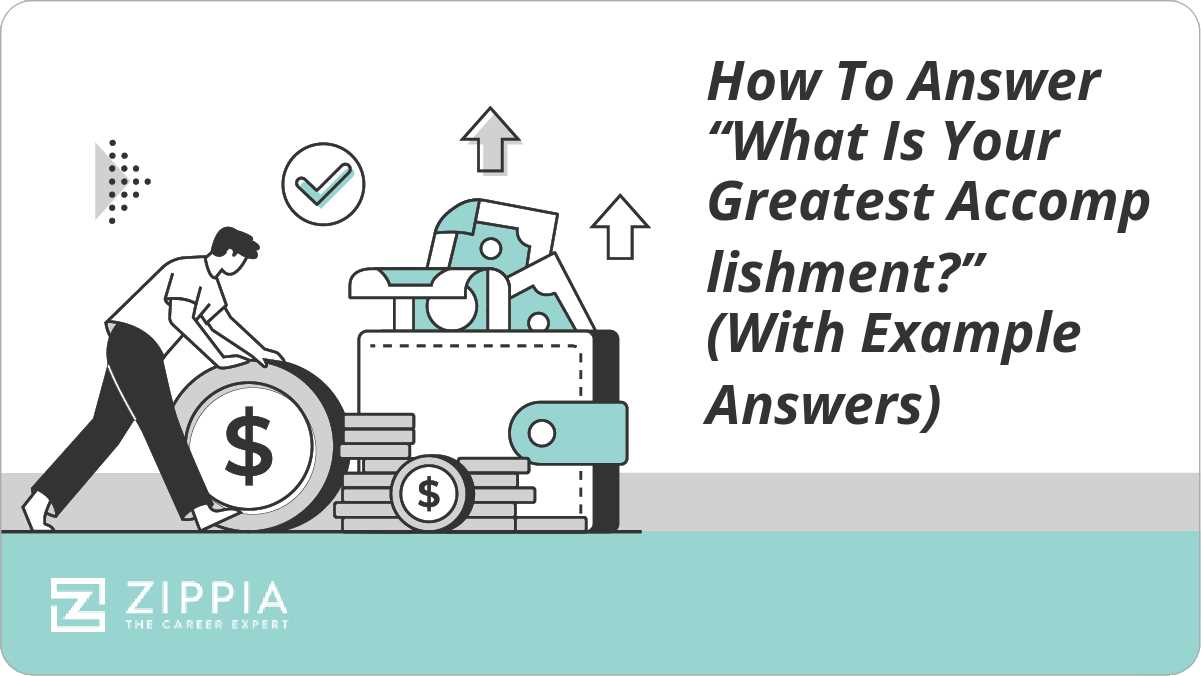
When potential employers inquire about past accomplishments, they are looking for more than just a list of completed tasks. They seek to understand how you approach challenges, what drives you to succeed, and how your contributions can align with the goals of their organization. This question provides insight into your ability to make a meaningful impact and contribute to the success of the company.
By asking about your past successes, employers are trying to gauge several key factors:
- Problem-solving abilities: How you identify issues and work towards solutions.
- Initiative: Whether you take proactive steps to drive results or wait for direction.
- Results-driven mindset: Your focus on achieving measurable outcomes.
- Work ethic: How committed you are to delivering high-quality results.
- Adaptability: How well you adjust to changing circumstances and challenges.
Employers also use this prompt to determine how well you might fit within their company culture. Your response can shed light on how you collaborate with others, your leadership potential, and your capacity to contribute to long-term organizational growth.
Ultimately, this question allows hiring managers to evaluate your track record and predict how your skills will translate into future success within their team. By providing thoughtful, well-crafted examples, you can effectively demonstrate the value you would bring to their organization.
Crafting the Perfect Response
Formulating an impactful response to highlight your significant contributions requires careful thought and strategic presentation. The goal is to share a story that not only demonstrates your skills but also aligns with the needs of the position you are applying for. It’s important to focus on relevant experiences that showcase how your past efforts can benefit the prospective employer.
Selecting the Right Example
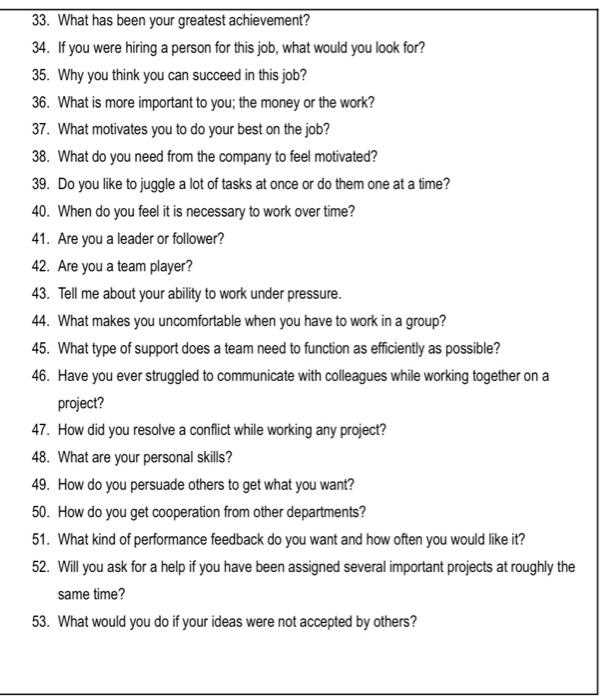
Choosing the most suitable experience is critical. Pick an instance where you had a clear role in driving positive outcomes. Whether it’s a project you led, a problem you solved, or an innovative idea you implemented, the example should be specific, measurable, and related to the skills required for the role. The more concrete the example, the easier it will be for the employer to see the value you bring.
Structuring Your Response Effectively
One of the most effective ways to organize your response is by using the STAR method (Situation, Task, Action, Result). This approach ensures you cover all necessary aspects of the story, providing context, explaining your actions, and quantifying the impact of your efforts. A well-structured response allows the employer to follow your thought process and appreciate the full scope of your contributions.
Be authentic in your delivery, emphasizing the skills you developed and how they relate to the current opportunity. Avoid embellishing details or overhyping your role; instead, focus on delivering a truthful, concise, and compelling narrative. By doing so, you will leave a strong impression of your abilities and your suitability for the role.
Highlighting Professional Milestones Effectively
When discussing key moments in your career, it’s essential to present them in a way that underscores their significance. Employers value milestones that reflect your growth, problem-solving skills, and contributions to your previous roles. The focus should be on how your work made a meaningful difference and how it aligns with the needs of the company you are applying to.
Choosing the Right Moments to Share
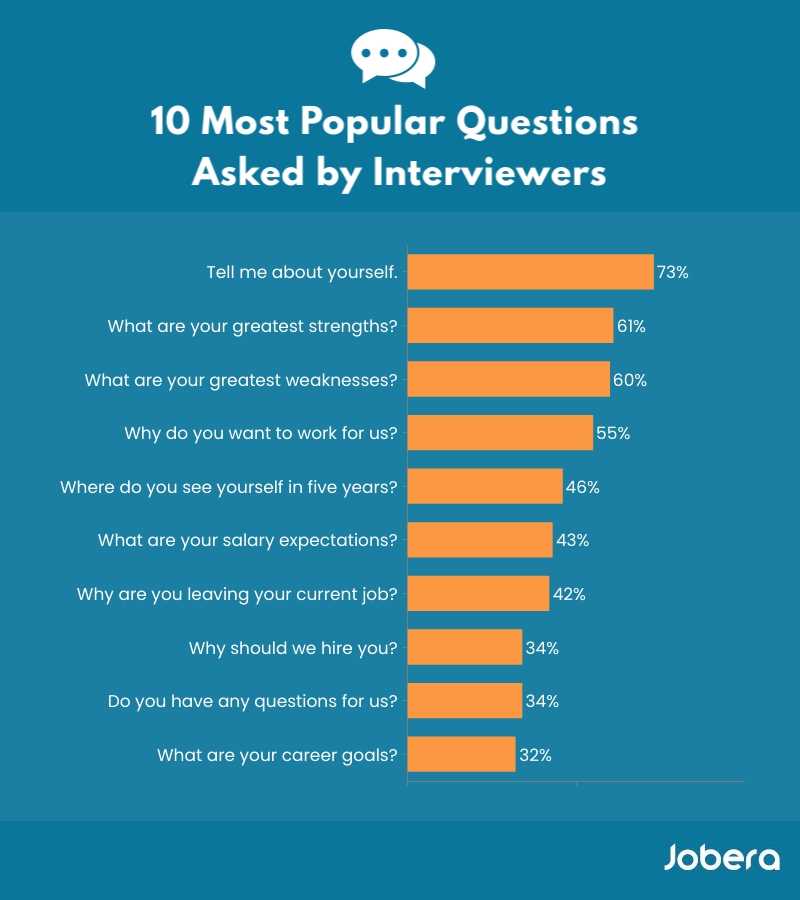
Select the moments that best demonstrate your skills and accomplishments. These can include:
- Leading a successful project that had measurable results.
- Overcoming a significant challenge that required creative problem-solving.
- Introducing a process or initiative that improved efficiency or outcomes.
- Receiving recognition for exceptional work or leadership within a team.
By focusing on these impactful instances, you show not only your competencies but also your potential to bring similar value to the prospective employer.
Providing Context for Your Milestones
It’s important to provide context for your milestones to help employers understand their full significance. Describe the challenges you faced, the actions you took, and the outcomes that resulted. Use measurable results whenever possible to demonstrate the tangible impact of your work. For example:
- Increased sales by 20% within six months through targeted campaigns.
- Streamlined operational workflows, reducing costs by 15% annually.
- Led a cross-functional team that delivered a product ahead of schedule, resulting in positive customer feedback.
Be concise but detailed enough to convey the importance of the milestones. This balance will ensure your response resonates with the employer and highlights your ability to create meaningful change in the workplace.
What to Avoid When Answering
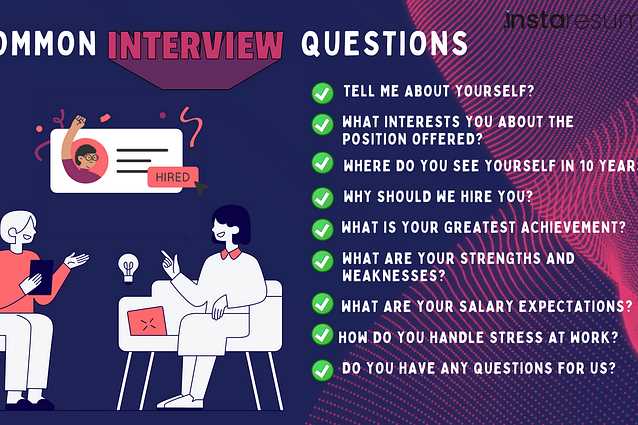
When discussing your past successes, it’s important to avoid certain pitfalls that can undermine the effectiveness of your response. Focusing on the wrong details, being too vague, or overemphasizing minor accomplishments can leave the wrong impression. To make sure your response stands out for all the right reasons, steer clear of these common mistakes.
One of the most important things to avoid is being overly modest. While humility is valuable, downplaying your contributions or failing to explain the impact of your efforts can make you appear unconfident or unsure of your abilities. It’s essential to strike a balance between modesty and showcasing your true value.
Another mistake is discussing irrelevant or unimportant details. Keep your response focused on significant moments that highlight the skills and experiences most relevant to the position. Avoid going off-topic or spending too much time on minor aspects that do not add value to your narrative.
Lastly, avoid exaggerating or embellishing your role in a particular situation. Overstating your contributions can lead to skepticism and mistrust. Stick to the facts and present your involvement honestly, highlighting the real value you brought to the table. This will demonstrate integrity and build credibility with the employer.
Using STAR Technique to Answer
One of the most effective ways to structure your response when discussing significant moments in your career is by using the STAR technique. This approach helps you provide a clear, organized, and impactful answer that covers all aspects of the situation while highlighting your role and the outcomes of your efforts. STAR stands for Situation, Task, Action, and Result, and it provides a framework to ensure your response is both focused and detailed.
Breaking Down the STAR Method
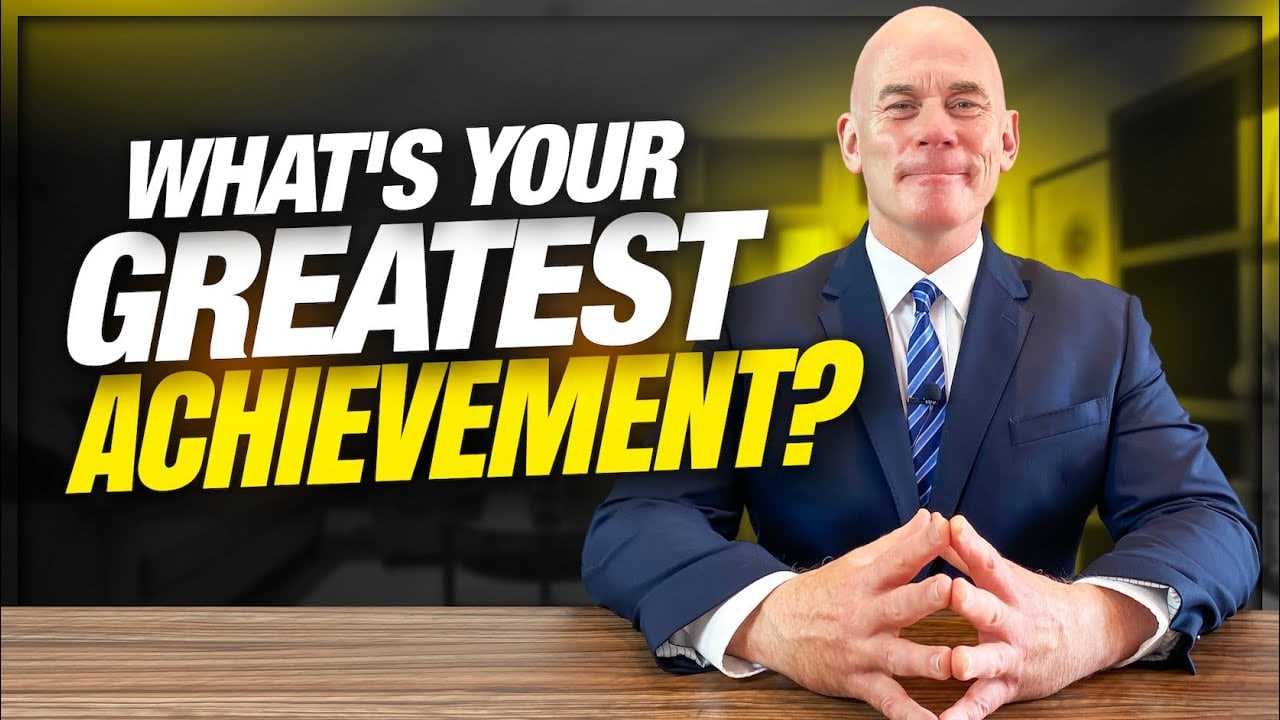
To use the STAR technique effectively, follow these four steps:
- Situation: Briefly describe the context of the scenario. What was the challenge or opportunity you faced?
- Task: Explain your specific role or responsibility in the situation. What was expected of you?
- Action: Detail the steps you took to address the challenge. Focus on what you personally did to resolve the issue.
- Result: Conclude with the outcome. Highlight any measurable success, such as improvements in efficiency, increased sales, or any other positive impact.
Why STAR Works
The STAR technique is particularly useful because it allows you to present your story in a structured way that is easy for employers to follow. By clearly outlining the problem, your contributions, and the outcomes, you ensure that your response is compelling and relevant. It also helps you avoid unnecessary details, focusing instead on the most important aspects of your experience.
By applying this method, you can effectively demonstrate not only your problem-solving abilities but also your impact in past roles, making it clear that you can bring similar value to the organization you’re applying to.
How to Showcase Leadership in Answers
When discussing past experiences, showcasing your leadership abilities can set you apart from other candidates. It’s not just about holding a formal leadership position, but demonstrating how you’ve taken initiative, guided others, and influenced outcomes. Whether through leading a project, mentoring a colleague, or taking charge in challenging situations, highlighting these moments is key to illustrating your leadership potential.
Emphasizing Key Leadership Qualities
To effectively highlight your leadership, focus on these critical traits:
- Decision-making: Show how you made informed decisions, especially under pressure, and the positive impact those decisions had on the outcome.
- Team collaboration: Demonstrate how you worked with others to achieve common goals, and how you managed differing perspectives to bring about the best results.
- Problem-solving: Explain how you identified issues and took the lead in finding solutions, ensuring that the team was aligned and moving forward.
- Empathy: Highlight how you supported others, mentored peers, or provided guidance to help the team achieve success.
Giving Concrete Examples
Rather than simply stating that you have leadership experience, back up your claims with specific instances. For example, you could describe a time when you:
- Led a team to meet a tight deadline while maintaining high standards of quality.
- Took charge during a crisis and successfully navigated the team through the challenge.
- Implemented a new process that resulted in improved efficiency across a department.
By sharing concrete examples of your leadership, you demonstrate not just your ability to lead, but also your capacity to adapt and influence positive change in any environment.
Tailoring Your Answer to the Role
When discussing your past experiences, it’s important to adapt your response to align with the specific role you are applying for. Employers want to understand how your background directly fits the position and how your skills can contribute to their team’s success. By tailoring your response to the requirements and challenges of the role, you demonstrate a clear understanding of the job and show that you’re well-prepared to make an impact.
Aligning Your Experience with Job Requirements
To craft a tailored response, start by reviewing the job description and identifying the key skills and qualifications needed. Then, think about your past experiences and choose examples that showcase the competencies most relevant to the role. For instance:
- If the role requires strong project management skills, highlight a time when you successfully led a team or project to completion.
- If the job focuses on innovation, discuss an instance where you developed or introduced a new solution that benefited the team or organization.
- If the position requires teamwork, emphasize situations where you collaborated effectively with others to achieve a goal.
Focusing on Relevant Results
In addition to matching your skills to the role, ensure that you focus on results that matter most to the employer. Use metrics or specific outcomes to demonstrate the value you brought to previous positions. This helps employers see how your past experiences directly translate into success in their role.
By customizing your response in this way, you show that you’ve thought carefully about how your background fits the position and that you’re ready to bring your strengths to the table from day one.
Discussing Team Achievements with Confidence
When discussing accomplishments within a group setting, it’s important to strike a balance between showcasing the collective success and highlighting your individual contribution. Employers understand that many outcomes result from teamwork, but they want to hear how you played a key role in achieving those results. By approaching the conversation with confidence, you can emphasize both your collaborative spirit and your personal impact.
Shifting the Focus to Your Role
While it’s essential to acknowledge the contributions of your team, don’t shy away from detailing your specific involvement. Here’s how you can highlight your individual role within a team effort:
- Clarify your responsibilities: Explain the tasks you were responsible for and how you managed them.
- Highlight leadership or initiative: Even in collaborative efforts, showcase moments where you took the lead or made key decisions.
- Demonstrate problem-solving: Share how you identified challenges within the team and proposed or implemented solutions that drove success.
Presenting Team Success with Impact
When talking about the overall outcome, ensure that you emphasize the team’s success while framing it within the context of your involvement. For example:
- Describe a project where the team reached significant milestones, then focus on how your actions contributed to hitting those milestones.
- Discuss a challenge the team faced, then explain how you worked with others to overcome it and deliver results.
- Use data or specific outcomes to quantify success, showing that the team’s efforts (and your contribution) led to measurable improvements.
By confidently presenting both the team’s collective success and your role in achieving it, you not only highlight your ability to work well with others but also your individual strengths as a key contributor to any team effort.
Why Soft Skills Matter in Your Response
When discussing past experiences, it’s important to not only highlight your technical competencies but also the personal attributes that contributed to your success. Soft skills play a vital role in how effectively you collaborate, solve problems, and lead others. These qualities are often what distinguish strong candidates, as they demonstrate how well you fit within a team and contribute to a positive work environment.
The Role of Soft Skills in Professional Success

While hard skills may get the job done, it’s the soft skills that ensure long-term success in any role. Employers seek candidates who can manage relationships, adapt to changing circumstances, and effectively communicate. By showcasing your soft skills in your responses, you illustrate your ability to thrive in a dynamic work environment. Some key soft skills to emphasize include:
| Soft Skill | Impact on Role |
|---|---|
| Communication | Helps in conveying ideas clearly and collaborating effectively with teams. |
| Problem-solving | Allows you to navigate challenges and find solutions independently or as part of a team. |
| Emotional Intelligence | Facilitates better relationships, conflict resolution, and empathy in team settings. |
| Adaptability | Ensures you can handle change and remain productive under varying conditions. |
Integrating Soft Skills into Your Narrative
To effectively demonstrate these qualities, incorporate specific examples into your responses. For instance, you can describe how your communication skills helped resolve a misunderstanding or how your adaptability enabled your team to successfully complete a project despite unexpected changes. These examples not only highlight your strengths but also give potential employers a sense of how you will function within their organizational culture.
Answering With Specific Examples
To provide a compelling response, it’s crucial to back up your statements with clear, real-life examples. Rather than offering vague generalities, specific instances demonstrate your capabilities and give depth to your response. Employers are more likely to remember concrete examples, as they show how you approach challenges, your decision-making process, and the tangible results you’ve achieved.
The Power of Concrete Stories
Specific examples allow you to paint a vivid picture of your strengths in action. These stories can be drawn from various aspects of your professional history, such as a particularly successful project, a challenge you overcame, or a time when you took the initiative. To create impactful examples, consider using the following framework:
| Example Component | What to Include |
|---|---|
| Situation | Describe the context or challenge you faced. Be clear but concise about the problem or situation. |
| Task | Explain the specific responsibility or task you were assigned to solve the issue. |
| Action | Detail the steps you took to address the task or resolve the situation. |
| Result | Highlight the positive outcome that resulted from your actions. If possible, quantify the results. |
Building Impactful Responses
Integrating this structure into your answers not only demonstrates your problem-solving skills but also provides clarity. For example, instead of saying, “I helped improve team performance,” you might say, “In my previous role, I identified inefficiencies in our workflow, implemented a new project management tool, and reduced task completion time by 25%.” By being specific and showing results, you turn your response into a compelling story that reflects your value as a candidate.
Dealing with Lack of Major Achievements
Not everyone has a standout moment or a significant milestone that defines their career. However, it’s essential to recognize that success doesn’t always come from one large accomplishment. Instead, growth is often built on a series of smaller steps, consistent effort, and the development of various skills. When you lack a major defining event, it’s important to highlight the continuous improvement, teamwork, and perseverance that have shaped your professional journey.
Focus on Progress and Learning
If you don’t have a grand achievement to share, you can focus on your learning experiences and how they contributed to your development. Below are a few ways to approach this:
- Highlight Key Skills: Talk about the skills you’ve developed, even if they haven’t led to significant awards or recognition. Emphasize your ability to adapt and learn.
- Emphasize Teamwork: Sometimes, the impact of collective efforts is greater than individual triumphs. Share examples where you contributed to the team’s success.
- Show Consistency: Employers appreciate reliability. Share examples of how you’ve consistently met expectations and contributed over time.
Turning Challenges into Opportunities
In cases where you feel that you haven’t achieved something monumental, focus on the challenges you’ve faced and the lessons you’ve learned. Overcoming obstacles, improving processes, or learning from failure can all be valuable talking points. For example, instead of saying, “I haven’t achieved a major milestone,” try framing it as, “I’ve had the opportunity to learn from several challenges, including…,” followed by how you applied the lessons learned to your growth.
Connecting Your Achievements to Company Goals

In any conversation about your professional milestones, it’s crucial to demonstrate how your contributions align with the larger objectives of the organization. Employers seek individuals who not only have the ability to succeed but who can also use their experiences to help further the company’s mission. Linking your successes to company goals shows that you understand both your role and the company’s vision, highlighting how you can contribute to its future growth.
Understanding the Company’s Mission
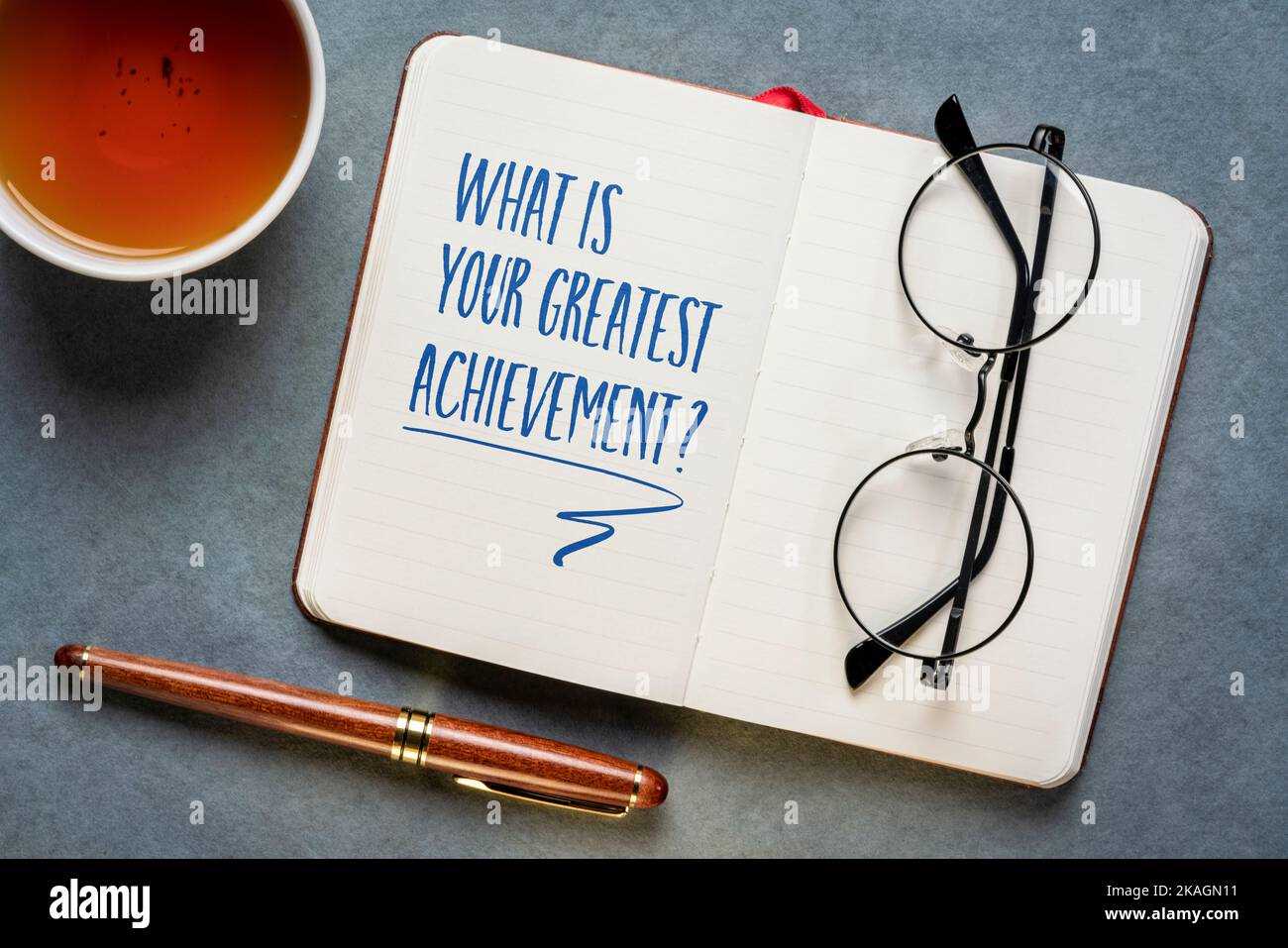
Before discussing your contributions, it’s important to research the company’s values, mission, and current objectives. Understanding these elements allows you to tailor your response to show how your past actions and efforts directly align with their strategic direction. This helps employers see that you are not just focused on personal success but also on supporting the overall success of the team and the organization.
How to Make the Connection
To effectively link your past experiences to the company’s goals, follow these strategies:
- Use Specific Metrics: Whenever possible, provide measurable data that demonstrates how your efforts helped drive results that align with the company’s priorities. For example, “I increased team efficiency by 20%, which helped the company meet its target for Q4.”
- Focus on Impact: Emphasize the positive impact of your work on key business areas such as productivity, customer satisfaction, or revenue growth. This shows that your contributions weren’t just personal wins but also supported organizational goals.
- Demonstrate Alignment: Show that you understand the company’s challenges and how your specific actions addressed these needs. Explain how you used your skills to contribute to solving problems that are relevant to the company’s current objectives.
Example Table: Connecting Personal Achievements to Company Goals
| Personal Achievement | Company Goal | Connection/Impact |
|---|---|---|
| Increased sales conversion rate by 15% | Drive revenue growth | Helped the company meet its revenue targets for the quarter |
| Led team to complete a project 2 weeks ahead of schedule | Enhance operational efficiency | Contributed to reducing operational costs and improving service delivery |
| Improved customer satisfaction by 25% | Boost customer retention | Strengthened customer loyalty and contributed to long-term business relationships |
By connecting your successes to the company’s overall goals, you demonstrate your strategic thinking and ability to drive tangible outcomes. This approach not only strengthens your position as a candidate but also highlights your potential to contribute meaningfully to the organization’s future success.
Balancing Humility and Confidence
When discussing past successes, it’s important to strike the right balance between acknowledging your contributions and recognizing the role of others and the circumstances that led to those results. Employers appreciate candidates who can confidently highlight their impact, but they also value humility and the ability to show how collaboration and teamwork played a part in their success. Finding the sweet spot between these two qualities can leave a positive impression and demonstrate both self-awareness and professionalism.
Why Both Humility and Confidence Matter
Confidence in your abilities is essential as it reflects your belief in your skills and your potential to add value. However, humility ensures you come across as approachable and grounded, which can foster better collaboration and build trust with colleagues. Employers often seek individuals who can take ownership of their contributions while also acknowledging the support of their teams and the resources that helped them succeed.
Practical Tips for Striking the Right Tone
Here are some strategies to help you balance confidence and humility in your responses:
- Acknowledge Your Team: While it’s important to highlight your role, don’t forget to mention how others contributed. For example, “I played a key role in the success of this project, but it wouldn’t have been possible without the support and collaboration of my team.”
- Focus on the Process: Instead of solely focusing on the end result, talk about the journey you took to get there, emphasizing the skills you learned and the obstacles you overcame. This shows humility while still showcasing your growth and expertise.
- Avoid Overstatements: Be careful not to exaggerate your role or make it sound like you did everything on your own. Use language that is factual and accurate, avoiding superlatives or hyperbole. For example, “I was part of a team that contributed to a 15% increase in efficiency” is more effective than “I single-handedly increased efficiency by 15%.”
Example Table: Balancing Humility and Confidence
| Example Statement | Balance of Humility and Confidence |
|---|---|
| “I led the team to finish the project early, but it was a group effort.” | Highlights personal leadership while acknowledging team effort |
| “My role was crucial in streamlining the process, but I couldn’t have done it without the resources and feedback from my manager.” | Shows confidence in contribution but recognizes external factors |
| “I took charge of the initiative, and the results were impressive, thanks to the support from the whole team.” | Demonstrates leadership while giving credit to the team |
By carefully balancing humility and confidence, you not only portray yourself as an effective and skilled professional but also as someone who values collaboration and recognizes the broader context of success. This approach helps build a well-rounded and positive image during any professional discussion.
Turning Failures Into Achievements
Everyone faces setbacks or challenges in their career, but how you respond to these moments can set you apart. Turning a failure into a success story involves reflecting on the lessons learned and showing how these experiences contributed to your personal and professional growth. By framing these instances in a positive light, you demonstrate resilience, adaptability, and the ability to overcome obstacles–all valuable traits in any workplace.
Reframing Challenges as Opportunities
Instead of viewing failures as negative experiences, try to frame them as opportunities for improvement and learning. Employers appreciate candidates who can acknowledge their mistakes, reflect on what went wrong, and take steps to avoid repeating them. This approach shows maturity and a commitment to continuous development. For example, instead of simply saying “I failed to meet the deadline,” you might say, “I missed a deadline, but I took responsibility and implemented better time management strategies to ensure it wouldn’t happen again.”
Demonstrating Growth Through Setbacks
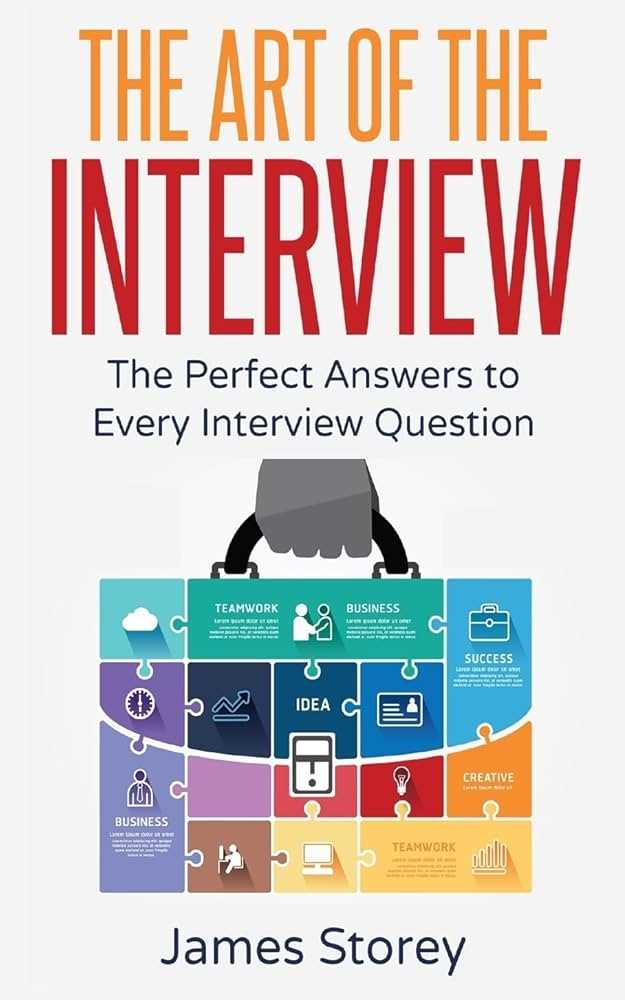
It’s important to show how you used a challenging situation to grow. When discussing difficult moments, highlight the actions you took to overcome them, the skills you developed, and the positive outcomes that resulted from those experiences. Here’s how to approach it:
- Acknowledge the issue: Be honest about the situation without focusing solely on the negative aspects.
- Highlight what you learned: Emphasize the knowledge or skills you gained that helped you improve moving forward.
- Focus on the resolution: Demonstrate how you applied what you learned to successfully handle future challenges.
By shifting the narrative from failure to growth, you present yourself as someone who is not only capable of overcoming adversity but also constantly improving and adapting. This mindset is not only beneficial for your personal development but also highly valued by employers looking for employees who can handle challenges effectively.
Preparing for Follow-Up Questions
After responding to an initial prompt, it’s common to face additional inquiries that require further explanation or elaboration. Being ready for these follow-up inquiries is essential to ensure that your responses are thorough and highlight your relevant skills and experiences. These questions often dive deeper into the examples you’ve shared, testing your ability to reflect, analyze, and provide concrete details about how you’ve handled specific situations in the past.
Anticipating Possible Inquiries
Preparation is key when it comes to follow-up inquiries. Reflect on your previous responses and think about what areas might prompt additional clarification or more in-depth discussion. Consider the following aspects:
- Provide context: Be prepared to explain the circumstances surrounding your examples, such as the challenges you faced, the goals you were aiming for, and the timeline in which you were working.
- Highlight specific outcomes: Make sure you can clearly articulate the results of your actions. Follow-up questions often ask for evidence or specific outcomes that demonstrate your success.
- Elaborate on your role: In team-based scenarios, you may be asked about your specific contributions. Be ready to describe how you personally influenced the outcome, without overshadowing the efforts of others.
Staying Calm and Focused
While follow-up questions can sometimes catch you off guard, it’s important to remain composed and respond thoughtfully. Here are a few tips to keep in mind:
- Take a moment to think: It’s perfectly acceptable to pause briefly before responding. This gives you a chance to organize your thoughts and deliver a more structured answer.
- Be honest: If you don’t have a direct answer, it’s better to admit it and explain what you would do in such a situation. Employers appreciate transparency and problem-solving abilities.
By preparing for potential follow-ups, you not only increase your chances of providing complete and detailed responses, but you also demonstrate to employers that you are thoughtful, thorough, and capable of handling complex inquiries with confidence.
Examples of Strong Responses
When sharing notable experiences, providing clear, compelling examples is key to illustrating your capabilities. A well-crafted response not only highlights your skills but also conveys your ability to contribute meaningfully to the team or organization. Below are some effective examples of responses that demonstrate how to frame your experiences in a way that resonates with potential employers.
Example 1: Leading a Successful Project
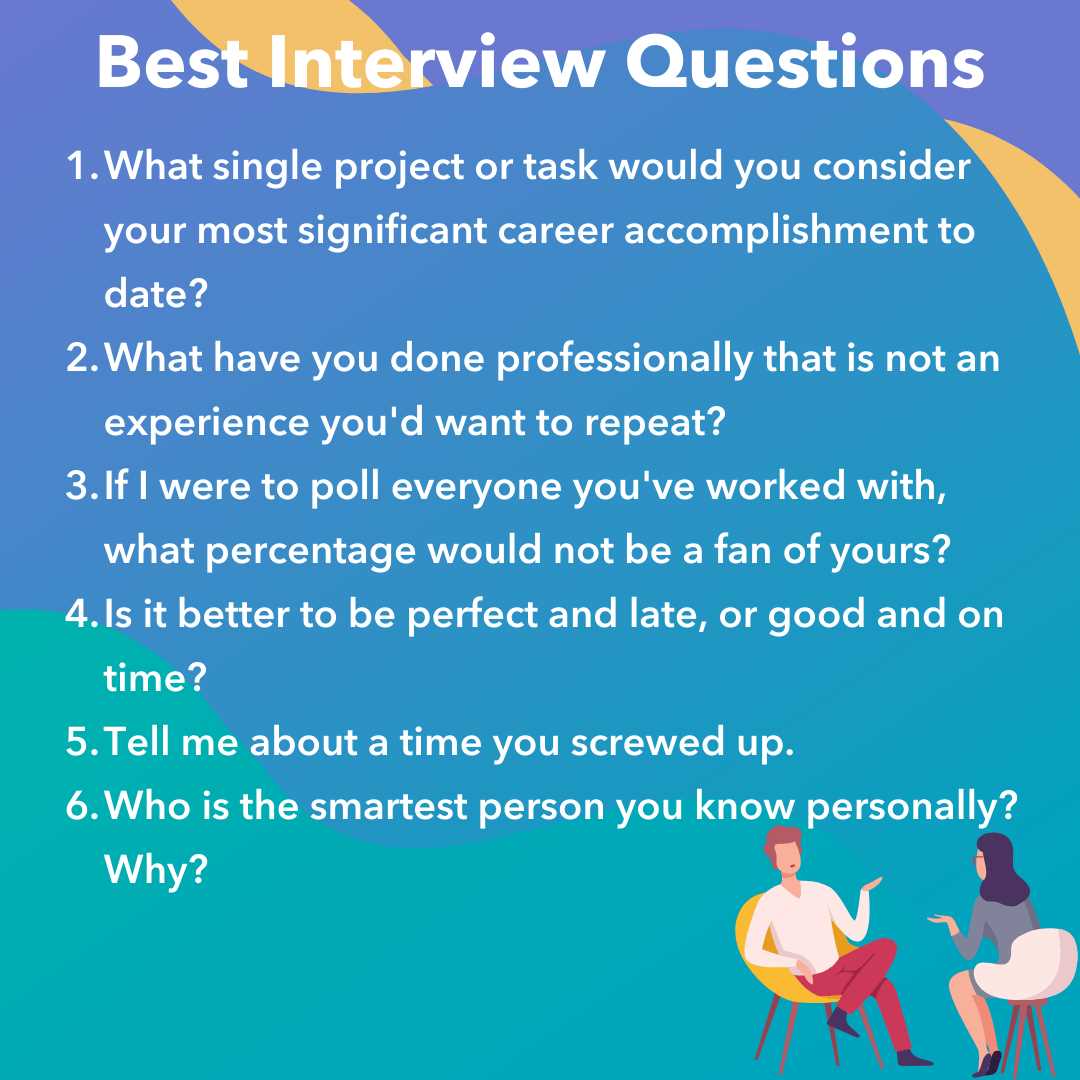
In this scenario, focus on your leadership skills, teamwork, and the results of the project. Here’s how to structure it:
- Situation: “In my previous role, I was tasked with leading a cross-functional team to develop a new software tool that would streamline our internal communications.”
- Task: “My responsibility was to manage the project from start to finish, ensuring all team members contributed effectively while meeting our tight deadline.”
- Action: “I organized regular meetings to track progress, encouraged open communication, and resolved conflicts that arose during the process. I also worked closely with the development team to address technical challenges.”
- Result: “The project was completed on time and within budget, resulting in a 25% increase in team productivity and reducing communication errors by 40%.”
Example 2: Overcoming a Challenge
In this case, demonstrate your problem-solving and resilience. The structure would look like this:
- Situation: “I was overseeing a marketing campaign for a new product launch when we discovered a last-minute issue with our ad content.”
- Task: “It was critical to resolve the issue quickly to prevent any delays in the campaign.”
- Action: “I immediately coordinated with the design team to revise the content, liaised with the legal department for approval, and communicated the changes to all stakeholders.”
- Result: “We managed to relaunch the campaign within 48 hours, which contributed to a 15% higher engagement rate than initially projected.”
Example 3: Improving a Process
This example highlights your ability to identify inefficiencies and improve processes. Here’s a strong response structure:
- Situation: “At my previous company, I noticed that our client onboarding process was inefficient, resulting in delayed service delivery.”
- Task: “I was tasked with improving this process to reduce time and improve customer satisfaction.”
- Action: “I analyzed the current workflow, identified key bottlenecks, and implemented a new software tool that automated several manual steps. I also trained the team on the new system.”
- Result: “The new process reduced onboarding time by 30%, and customer satisfaction scores increased by 20% in the following quarter.”
These examples illustrate how to effectively share specific instances where you made a measurable impact. By focusing on clear, structured responses that showcase your problem-solving, leadership, and process-improvement skills, you can present yourself as a strong candidate capable of delivering real value.